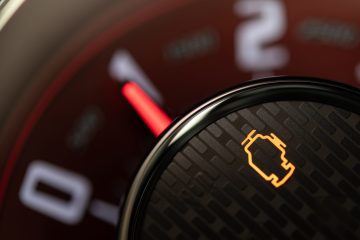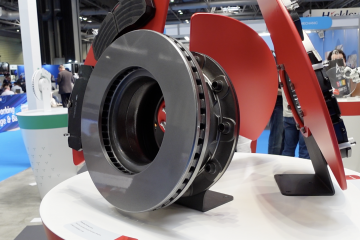The UK needs an increase in specialised electric vehicle (EV) garages to cope with repair demand, as the aftermarket faces a skills gap in relation to the technology.
This is the view of Warrantywise CEO Lawrence Whittaker. Having researched the number of garages currently offering EV repair, and speaking with Hybrid and Electric Vehicle Repair Alliance (HEVRA) founder Peter Melville, he states that the aftermarket needs to do more now, not just for itself, but the future of UK EV adoption.
A total of 31,130 cars registered in February had an electric drive – be it a hybrid, plug-in hybrid (PHEV) or battery-electric vehicle (BEV). In comparison to 2021, 154% more BEVs were registered. So far this year, 24,850 BEVs have been sold in the UK, already more than one-and-a-half times the 9,776 sold during the same period last year.
Therefore, sales of EVs is not a problem. The issue, it seems, is now turning to EV repair. Whittaker states that investment in the industry is needed to halt the “ever-widening skills gap’, especially with the end of new internal-combustion engine (ICE) sales by 2030.
“The Institute of the Motor Industry (IMI) agrees and is calling for a £15m funding injection from the Government to help address the skills gap. The organisation currently reports that of a total workforce of 238,000 motor technicians in the UK, only 15,500 are IMI Techsafe registered and qualified to work on EVs – that’s just 6.5%of the UK’s total motor technician workforce,” states Whittaker.
“The skills gap is simple and evident to me, and as a specialist third-party automotive warranty provider, it’s worrying. There are more zero-emission and PHEVs on the road than there are specialist third-party mechanics and skilled labour to maintain them. That’s the simple maths. With predictions of more than ten million electric-based cars on the road by 2030, and the government working towards 2030 with its own emissions goals, this is something we need to fix, and fast, or else customers will end up having to continue to pay dealer rates.
Electric vehicle concerns
Whittaker has looked at the number of members that HEVRA currently has. A total of 180 garages are signed up to the organisation, all of whom are trained to diagnose and fix EV problems. However, HEVRA needs to add another 120 garages in 2022 alone to keep up with demand on its services.
While this year they are on track, with 17 new garages opened already in 2022, by 2025 they will need to open a new EV specialist garage every day to keep up. That is also only based on existing cars which are under warranty, not possible future numbers.
“The car repair sector has changed enormously since the days of stripping down oily engines, and it requires a different skillset to what was needed in the past, but also can appeal to a different kind of person,” commented Melville. “It is important that those people who would be very useful and very happy in this sector don’t overlook it based on the stereotypes of the past.”
Number of EVs increasing
Whittaker states that while predictions on the number of EVs on UK roads in the next 10 years vary, few dip below 10 million units. Autocar predicted in September 2021 that the number will be 12.7 million vehicles, which the Climate Change Committee, an independent public body that advises the government, raises to 18 million BEVs and hybrid models on roads by 2030. Ofgem data corroborates these figures, predicting that more than 6.5 million households plan to purchase a BEV or PHEV in the next five years, equating to one in four UK households.
“Should the predictions and the number of cars expected to be EVs in the next ten years become reality, and there is every reason to believe that they will, the aftermarket repair industry will need to follow,” Whittaker adds. “Yes, all of these cars will be protected by manufacturer warranties for anywhere between three and eight years, but what happens then? BEVs and PHEVs are expensive to repair, despite having fewer moving parts than their ICE siblings, and they will still go wrong; when they do, they are not the sort of cars you can fix yourself. High voltages and currents will mean that only the most highly qualified mechanics will be capable of working on electrified vehicles.
“Overall, the figures are staggering, and highlight a real problem for the UK. With such hard deadlines in place for the electrification of all personal transport set by the government, the onus is on them to think about the wider implications of where all these cars will be maintained, and prioritise the incentivisation of training to cultivate the next generation of technicians to step into the role.’
Whittaker believes that the government needs to work with bodies like HEVRA to show the workforce that training as an EV technician is a rewarding and interesting career, one which is appealing to school and university leavers, and those already employed in the sector alike.
“This problem isn’t going to go away, and it needs to be tackled now, not in 2030,” he concludes.



